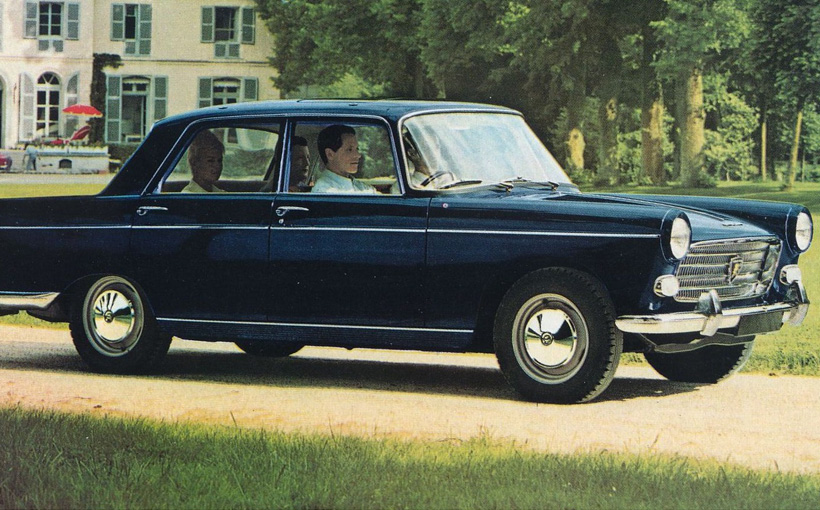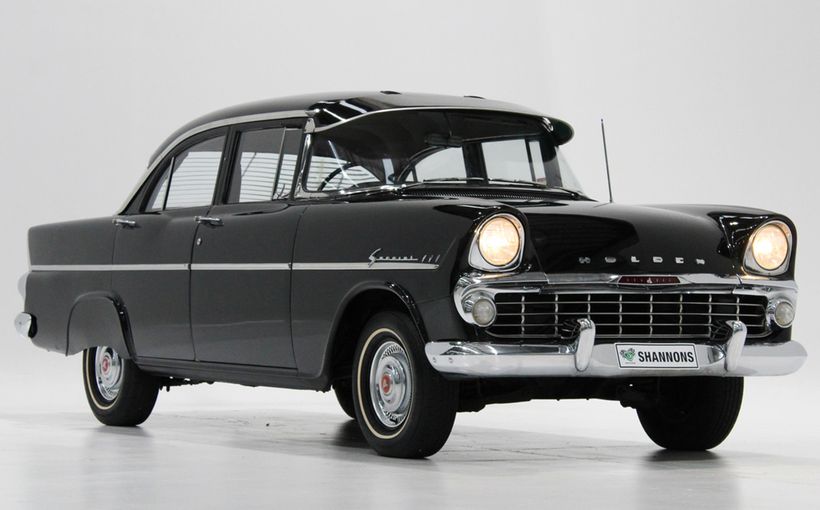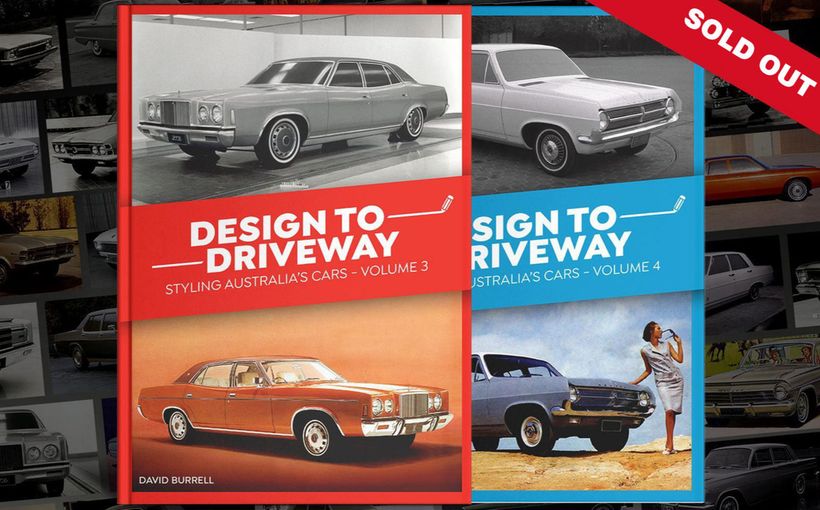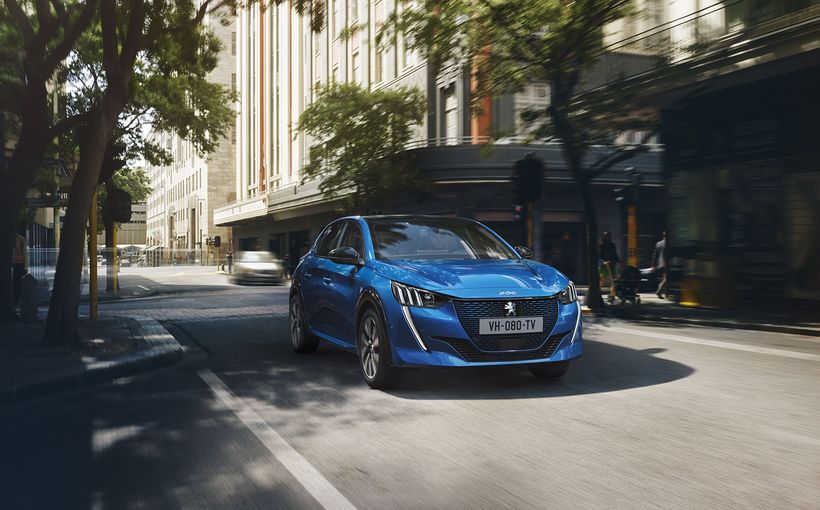1962-70 Peugeot 404: The French Master with a Used Italian Suit

1962-70 Peugeot 404: The French Master with a Used Italian Suit
The new Peugeot 404 on its November 1962 local release was too easily dismissed as an overpriced and dated variation of the lookalike BMC Farina models released locally in 1959. Even after the word spread quickly that it raised the bar over the popular 403 by a big margin, buyers of the final local models in 1970 still had to endure jibes about it looking like an old Morris or Austin. For a 1960 French release, it was as crisp and modern as any new model of that year.
Because it stayed ahead of most family cars under the skin for its entire local model life, Peugeot was under no pressure to change its looks. The 404 received annual improvements that kept it that way, not one of them frivolous. Each was accompanied by either a price drop or no increase as rising Australian content made the 404 more competitive.
The Peugeot 404 is one of those rare cars far more than the sum of its parts. On release, it was nominated as one of the quietest cars in the world, a product of its wind-cheating body details, intensive suspension tuning and low mechanical noise. The 404 did not need excessive metal, wadding or insulation to achieve this. It was by design.
It was also nominated as one of the best built. All visible bright work including grille, bumpers, hubcaps and trim strips were stainless steel. If Radial Tuned Suspension describes suspension finely tuned for standard equipment radials, the 404 was at least 16 years ahead of Holden.
Michelin was involved in setting-up the suspension, not just for radials, but the harsher steel-belted radials before 1960. Although Citroens were fitted with Michelins earlier, the 404 virtually matched the DS19’s suspension refinement using steel springs, not the Citroen’s complex hydro-pneumatic system.
The 404’s all round vision was world’s best practice. Its turning circle with its superbly weighted rack and pinion steering was barely 10 metres. Brakes, whether they were the early drums or later discs, were often described as “spectacular.” There was a simple but clever mechanical control hooked up to the rear axle that used the weight transfer under braking to regulate line pressure to the rear brakes and prevent them from locking.

The torque-tube rear suspension didn’t lift the weight off a rear wheel if it needed traction. This was one of the key reasons why a 404 could always go head to head with a VW in tough, boggy conditions as neither had rear axles that tried to rotate around tailshafts. The 404’s long travel suspension (front struts, rear live axle with coils and radius arms) could plunge into Australia’s deepest potholes or absorb the nastiest dips and rises without the VW’s nasty geometry changes. The 404 could serenely cruise over all Aussie road surfaces at top speed then corner with only minor adjustments in speed.
Peugeot spring and damper rate tuning was the best in the world at the time, dictated by rough roads in the South of France and the many, far-flung French colonies that depended on the 404 for mobility. A crank handle, battery isolating switch and reinforced captive bolts in the roof for heavy duty racks were part of this long distance, all-purpose usage.

The front seats, which reclined into a double bed then highlighted why the column shift was located conveniently out of the way, set an industry standard and reflected French priorities. (Unlike any other car-producing nation, most French cars at that time had reclining seats as standard including Renaults, Simcas and Citroens).
The universal door armrest design of modern European cars with integrated grab handles was seen here first. Face level ventilation that poured in fresh air with the windows closed, independent of the heater system, was standard.
It would be hard to nominate a better column gearshift with its special counterweighted linkages and joints.
Like the first Valiants, the 404 engine was inclined for a sleeker bonnet line. Unlike later Valiants, the 404 had a genuine hemi-head which allowed its 1618cc to match a Holden 2.3-litre six in horsepower then better it.

Was it THAT good?
The Peugeot 404 wasn’t perfect. When released in Australia at $2900/1450pounds, it was too expensive even if it was less than half the price of a Mercedes-Benz 220S which it matched in most areas and bettered in some. Local pricing was steadily addressed until value for money became one of its biggest selling points.
Although the 404’s long lived mechanicals were one of its strongest points, there were some aspects more complex than they needed to be. The 1.6-litre engine was a wet-sleeve design and coolant neglect or overheating could create head gasket and other sealing issues. Its Solex carburettor was notorious for flat spots under hard acceleration if not kept in perfect tune. Changing spark plugs deep in the alloy head required a deft and careful touch.
The gearshift may have been slick in operation but early cars were infuriating for non-French drivers with a shift pattern that placed first and fourth on either side of the 2nd-3rd gear shift plane. French logic was that you only used first to get going and fourth to stay cruising so placing second and third gears together with one short flick apart for the majority of driving was the only way to go. This changed in later models.
A minor deviation from the norm but a major annoyance outside France was the door lock buttons which were up when locked, down for unlocked. This would prompt well-meaning passengers to go around and unlock the whole car at the end of a journey, after assuming the driver was absent-minded!
The industrial-strength swinging lever parking brake which lived under the dash between the steering column and the front door could not be operated while wearing a lap-sash seat belt correctly adjusted. Not an uncommon failing of the day, it jarred in a cabin design near perfect in most other areas.
Instead of a conventional crown wheel and pinion differential design, the 404 had a worm drive, allegedly to create a lower rear axle profile for extra suspension travel. Its bronze internals required a special castor oil blend. If fed the normal mineral hypoid oil, as so often happened, it would expire at great cost.

The remaining shortfall was not so easily addressed despite subtle changes.
Its Farina styling, so effective in providing roomy accommodation for four adults and a boot to match, did the 404 no favours. It made the 404 look tall and skinny creating the impression it was as unstable as it was stable.
The styling also linked it to BMC and Fiat models that proved as unsuited to tough local conditions as the Peugeot 404 was ideal. As the BMC and Fiat models were on their way out in Australia, the 404 was getting into its stride. The styling unnecessarily aged the 404 before its time.
Ironically, its main competition in Australia was the Austin 1800 replacement for BMC’s Farina models. It was also a vehicle unusually advanced in stability, traction and handling. Although it couldn’t match the high clearance go-anywhere ability of the 404, its styling and packaging was a generation ahead of the Peugeot. For a buyer in the local $2500 segment, the ongoing improvements in both models were of great interest although preferences often came down to front drive versus rear drive.

Peugeot came close to applying several cues from the striking coupe and convertible range which would have brought the 404 in line with the similar Lancia Flaminia but didn’t have to. The 404 just kept outselling production around the world and was set to be replaced by the 504 after 1967 anyway. Because the 404 was still in such high demand, the two continued together.
Australia was no exception but convoluted local tariff laws decreed that the two were too close in engine capacity to be treated as separate models, the same dilemma facing the Renault 12 and 16. Although it made sense to make the Renault 12 engine slightly smaller to create room for the 16, making the 404 engine any smaller made no sense in Australia. Either the 404 or 504 had to go.
The 404 was withdrawn in 1970 long before the local market was ready to say goodbye. As soon as the later and larger Volvo 144 was assembled locally at the former Volkswagen plant, it proved to be the right decision. Despite this shift to bigger 2-litre fours, the bigger, costlier, more complex and less reliable 504 was not always the logical replacement even if it was a more modern car.

Australian Peugeot 404 Production History
By 1959, Peugeot 403 assembly had been shifted to Continental and General to replace the Simca after Chrysler Australia took over Simca assembly and distribution. It was joined by the 404 late in 1962 just after Studebaker was added to the C and G mix, which also included the Citroen Parisienne and NSU Prinz.
Changes in local tariff laws effectively forced all local players after 1964 to choose between increasing local content or end token local assembly and revert to fully imported.
This prompted the joint marketing of Renault and Peugeot in Australia by Renault from April 1964 and the immediate shift of Renault assembly to the C and G plant at Heidelberg West, adjacent to Melbourne’s 1956 Olympic Village.
As Studebaker floundered in the US and Canada and niche players NSU Prinz and Citroen ID19/Parisienne could not support increased local content, C and G ended local assembly in 1966. The entire C and G Heidelberg West facility was then sold to Renault in August 1966. Combined Renault/Peugeot production raced from 150 to over 500 units per month by the end of 1967.
Many of the 404’s most desirable mechanical, body and trim variations were not offered in Australia to maintain economies of scale. However, the wagon and light commercial were sold here albeit in relatively small numbers but not the coupe or cabriolet. These key factory changes and single local specification explain how and why the 404 could be kept up to date at a bargain price until local production ended.

1962-63: First Australian examples go on sale. Look for steel over riders, round rear reflectors, vertical spare wheel in boot, steel grab handles attached to door armrests, clear front indicator lenses, circular oil bath air filter on passenger’s side engine bay, large hubcaps, rectangular instrument pack, French gear shift pattern with 2-3 in same plane. Basic Michelin X steel-belted radials. Power output 72bhp/54kW. At $2900, the 404 did a better job of driving buyers to the older but refreshed 403 which had its price slashed to just over $2400. To most buyers, the 403 looked a bigger, more substantial car than the new 404 which it was in most dimensions except for its 1.5-litre engine.
1964: Five-bearing crankshaft fitted. Local cross-ply tyres fitted to boost local content but destroyed steering precision and suspension tune. Dealers directed enthusiast buyers to nearest Michelin stockists.
1965: From March, price was slashed to a competitive $2550, power went up to 76bhp/57kW, braking area increased, engine inclined more and air-cleaner moved to driver’s side where it stayed even through 504 model life. Rubber over rider inserts and smaller hub caps add class.
1966: Two-section amber/clear front parking light and indicator units. Two-tone door trim. Local plant swaps from enamel to acrylic lacquer in November marking an end to dull grey colours tinted with white, green and blue.

1967: New joint Renault-Peugeot assembly allows wider choice of better quality local parts including new soft-feel smooth-texture vinyl trim. A new circular instrument pack set in silver includes clock and brings cabin alive. Power now 80bhp/60kW, revised front anti-roll bar is joined by rear anti-roll bar for the first time. Spare wheel moved to underboot cradle for access without disturbing luggage. Larger fuel tank. Rear reflectors now square and over riders have wider full rubber facings that extend top and bottom. Additional bright trim between rear bumper and body improves appearance. New colours include rich dark colours for the first time. The 404 now dominates sales leading to 403 withdrawal.
1968: First round of safety improvements include large sponge-feel gearlever knob, centre-pad steering wheel and extra dash padding. Gearshift switched to conventional H-pattern, hydraulic ball-race thrust bearing clutch operation replaced carbon-thrust type. Local textile-belted radials (Olympic GT and Dunlop SP41) fitted as standard improved grip and steering precision but sudden breakaway characteristics didn’t suit 404.

1969: Surprise upgrade added an alternator and front disc brakes and power booster. Front rotors were an inch and a half (almost 40mm) bigger than the XW Falcon GT’s new front discs. New door trims featured padded door tops, recessed door handles and integrated soft feel grab handles/armrests all round at a time when armrests were rarely standard on all doors. Nieman steering lock was now standard. Revised silver wheels featured multiple slots. New Renault colour range shared with rectangular headlight R10 facelift and new 16TS featured brighter mid-green, light blue, claret and orange-tan colours and new leather-grained trim.
1970: Most extensive body detail changes since new include flatter, girder-profile bumpers similar to wagon, reversing lights fitted flush in lower bright section of each tail light and deletion of side parking lights ahead of front doors. New bumper profile forces deletion of brightwork added in 1967 between bumper and body at rear. Chrome headlight rims standard for the first time. Latest rawhide long-grained vinyl trim was shared with the new Renault 12. Local 404 assembly ends prematurely as duty anomalies force local operations to back the 504 as Peugeot’s sole local model. The 404 sedan continues until 1975 in France then 1991 in other markets.

Why wasn’t the 404 fuel injection model sold in Australia?
In 1963, the advanced Kugelfischer fuel injection system was offered on the 404 boosting power by almost 30 per cent. Featuring the world’s most advanced mechanical injection system, its advanced mechanical pump was later adopted by Bosch. It was expensive and required specialist knowledge to service.
Its parts were also more vulnerable to fuel contamination, a greater concern with the 404’s strong rural buyer base. The big boost in compression ratio of the 404 fuel injection engine required a higher octane than most local fuels offered. The projected price in 1963 would have been around $3500, a big increase generated by the much higher value of the imported injection system which in turn would have reduced local content by much more than say, an extra carburettor.
Such a hefty price boosted by extra duty would have placed it too close to premium British sixes and entry American V8s. However, that would not have stopped C and G. There was a small but keen market for a performance homologation version of the 404, for both competition and private use.
By mid-1964, Renault was handling the marketing of Peugeot. Compared to the unconventional rear-engined Renault R8, Renault could sell every 404 it built following the huge price cut for 1965. It made more sense for Renault to homologate the R8 Gordini to boost the image of the R8. After all, the R8 was the home brand and local R8/10 volumes were critical in keeping Renault’s local assembly lines open for the 404.
Fielding an equally expensive homologation 404 against the R8 Gordini sold by the same dealer network made no sense either. Instead, Renault built its local marketing of the 404 around the 404’s many African rally victories which were seen as just as relevant to Australian buyers (hence Ford’s earlier local effort with the Falcon in the same arena) as any local race or rally success. Because Renault made sure Australian buyers in that segment knew about the 404’s domination in the East African Safari, establishing similar credentials for the Austin 1800 had become a high priority by 1968.
Once the later Renault 12 and 16 range was firmly established, the later Peugeot 504 was pushed into local rally duty. Several special 504 injection models with the same Kugelfischer injection system, now shared with the BMW 2002, were offered to Australians.

Was the Peugeot 404 Australia’s Best Car?
Any 404 discussion will draw debate on whether it was the best all-round car for Australian conditions ever, a conclusion stated often in road tests at the time. Its ability to cruise at top speed over almost any road surface relatively cheaply and very comfortably is hard to argue with. It was certainly true in the 1960s when most Australians had to buy a single car to cover a wide range of requirements at a time when the bush was never too far from the suburbs.
Prior to that, the first Holden offered a similar suite of capabilities, something that the FE/FC series maintained while the VW Beetle matched it in a smaller package, at a smaller price. The Peugeot 403 was better than both but it was too expensive and its four cylinder engine was too small for the loads that the body encouraged.
The Mercedes-Benz “finny” 220S/SE raised the bar in 1960 and was without doubt Australia’s best car at the time except its price was way too high for most Australians. Rust-resistance in local examples was also not good enough to offset the high price as a long term investment.
As Holden did nothing to improve standard comfort, ventilation, equipment, braking, safety and handling over the first Holden for most of the 1960s, no Holden was a serious contender during this period. The wonderful new red engines merely highlighted the shortfalls everywhere else.
The Volvo 122 came close to matching the 404 but it was too expensive and didn’t drive as well for it to be a better deal. The Renault 16TS was a serious challenger from 1969 except most Australians were still wary of front drive and Renault complexity. The Datsun 1600 from 1968 made the Beetle redundant for most small car buyers as a budget all-rounder with extra comfort and refinement.
The big question is whether anything offered to Australians since 1970 was good enough to unseat the 404 as the best all-round single vehicle choice for all Australian conditions.
Protect your Peugeot. Call Shannons Insurance on 13 46 46 to get a quote today.









